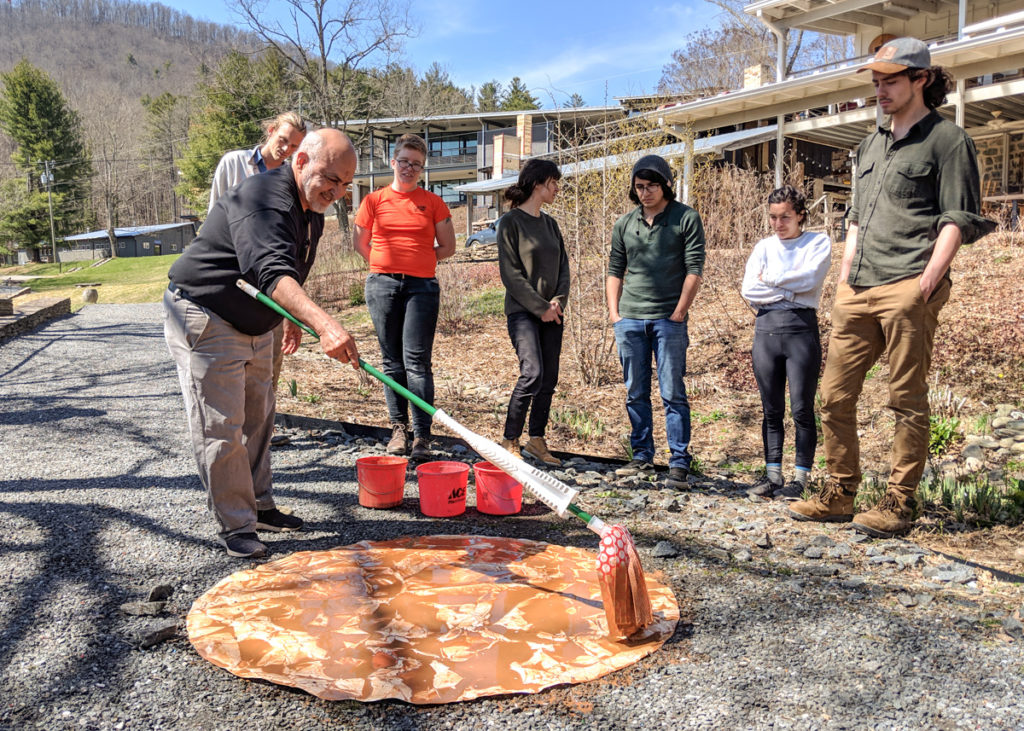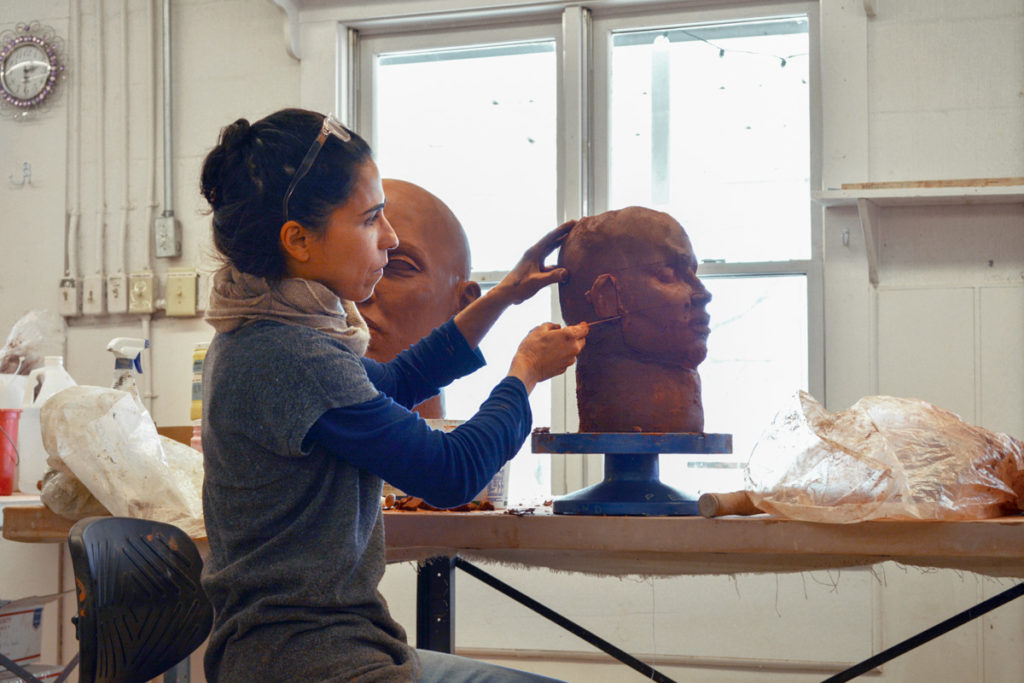
Visiting artists are part of every spring and fall concentration at Penland. They help enrich our sessions by bringing new perspectives, skills, and approaches to our studios and sharing their experience with our students. This spring, we’ve been doubly lucky to have two visiting artists, Jaime Suárez and Cristina Córdova. They spent this week working side by side in the studio, pushing clay in very different directions.
In addition to their public lectures at Northlight, both Jaime and Cristina opened up their processes to the community through an afternoon of demonstrations. Jaime walked us through two of his recent experiments with making marks in clay. In one, shown above, he applied a watery clay slip to a crumpled sheet of paper. As the slip pooled and dried, it captured the topography of the paper surface in layers of clay, creating the possibility for a two-dimensional print of a three-dimensional surface. In another process, shown below, Jaime demonstrated how he creates monoprints with just a clay slab and water, altering the image by varying the moisture levels and the impressions on the clay. Like the clay paintings, these prints captured the data of the surface using the inherent colors and qualities of his material.

Cristina, for her part, focused on clay’s incredible sculptural potential. She gave a demonstration of her process for sculpting the human head, starting with a flat slab of paper clay that she formed into a cylinder and then refined. Over the course of half an hour, we watched with awe as the cylinder first took on the rough shape of a human head through pushing and paddling, then developed a ridge at the brow, cavities at the eyes, and protrusions for the nose and lips. To build up the features further and add unique expressions, Cristina built onto them with smaller additions of clay. All the while, she explained the shapes she keeps in mind to guide her sculpting—the egg shape of the head, the teardrop shape formed by the side of the nostril, the three different planes of the lips.

Even though none of our current workshops deal directly with figurative sculpting or painting or making prints, there is a lot of inspiration to be drawn from these demonstrations. We hope all the students who attended will return to their benches, their wheels, and their torches with ideas about how to take advantage of the inherent qualities of their materials to move them in new directions. Thank you, Jaime and Cristina, for being here and sharing so generously!


